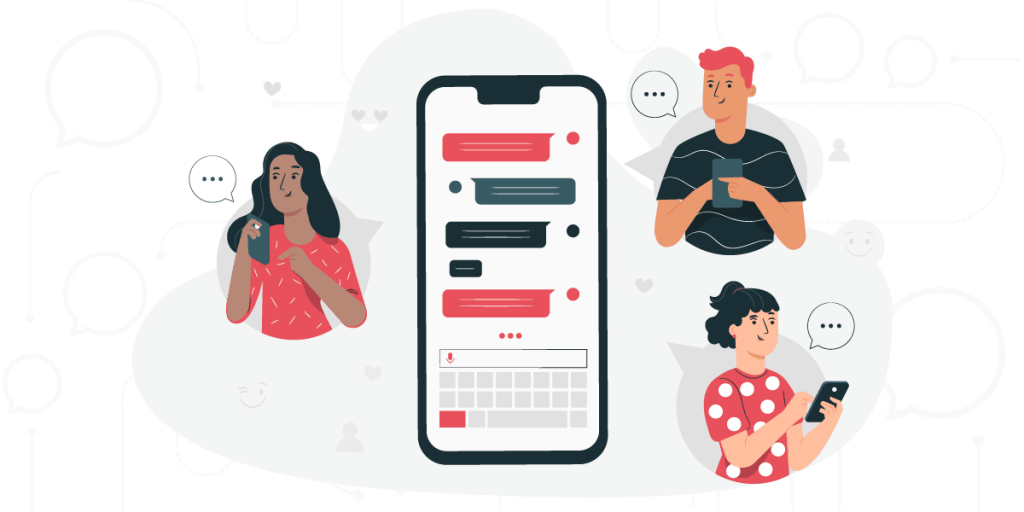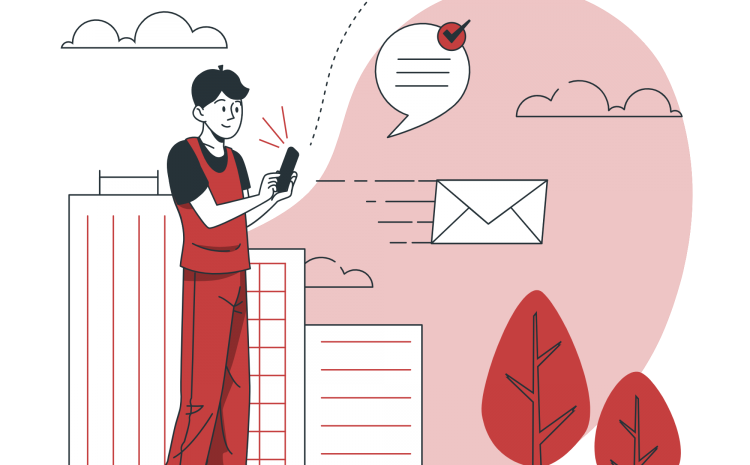Enhancing Customer Engagement with Two-Way Messaging-2024
Two-way messaging, or two-way SMS service, allows businesses and brands to send and receive messages from customers. Text message marketing with two-way SMS utilizes application programming interfaces (APIs), complete text message marketing platforms, and all-in-one solutions. Unlike one-way SMS messaging, two-way text messaging lets the recipient and sender interact with one another.
Table of Contents

Strategies for Two-Way Messaging
- Personalization:
- Customer Data Utilization: Use customer data to personalize messages. Address customers by their names and tailor content based on their preferences and purchase history.
- Segmented Messaging: Segment your audience based on demographics, behaviors, and preferences to send relevant messages to each group.
- Timely Responses
- Quick Acknowledgments: Acknowledge receipt of messages quickly, even if a detailed response will take longer. This reassures customers that their queries are being handled.
- Proactive Communication: Reach out proactively to provide updates or information before customers have to ask, such as shipping notifications or service updates.
- Interactive Campaigns
- Contests and Giveaways: Run contests or giveaways that require customer participation. This can boost engagement and create excitement around your brand.
- Interactive Content: Use interactive content like quizzes, polls, and games to engage customers and collect valuable data.
- Feedback Loops:
- Regular Check-Ins: Schedule regular check-ins with customers to ask for their opinions and feedback on your products or services.
- Customer Advisory Boards: Form advisory boards consisting of key customers to gather insights and feedback on new initiatives or products.
- Analytics and Improvement
- Track Engagement Metrics: Monitor metrics like open rates, click-through rates, and response rates to understand what works and what doesn’t.
- Continuous Improvement: Use the insights gained from analytics to refine and improve your messaging strategy continuously.
- Compliance and Privacy
- Opt-In and Opt-Out Options: Ensure customers can easily opt-in and out of messaging services to comply with regulations and respect their privacy.
- Data Security: Protect customer data by implementing robust security measures and being transparent about how their data is used.
- Community Building
- Foster a Community: Create forums, social media groups, or online communities where customers can interact with each other and your brand.
- Engage with Community: Actively participate in these communities to foster a sense of belonging and loyalty among customers.
Benefits of Two-Way Messaging
- Improved Customer Satisfaction: Real-time interactions help in resolving issues quickly, leading to higher customer satisfaction.
- Increased Engagement: Interactive and personalized messaging keeps customers engaged and more likely to interact with your brand.
- Better Insights: Direct feedback from customers provides valuable insights into their needs and preferences.
- Enhanced Loyalty: Building a relationship through continuous and meaningful interactions fosters customer loyalty.
- Higher Conversion Rates: Engaged customers are more likely to convert, whether it’s making a purchase, signing up for a service, or participating in promotions.
Implementation Steps
- Choose the Right Platform: Select a messaging platform that suits your business needs and supports the channels your customers prefer.
- Set Clear Objectives: Define what you aim to achieve with two-way messaging, such as improved customer support, increased sales, or better engagement.
- Train Your Team: Ensure your customer service team is well-trained in using the messaging tools and understands the importance of tone and timing in responses.
- Automate Where Possible: Use automation for routine queries to free up human agents for more complex interactions.
- Monitor and Optimize: Regularly review the performance of your messaging strategy, gather data, and make necessary adjustments to improve efficiency and effectiveness.
Conclusion:
The benefits of two-way messaging are significant, ranging from improved customer satisfaction and increased engagement to better insights and enhanced loyalty. By choosing the right platforms, setting clear objectives, training your team, leveraging automation, and continuously monitoring and optimizing your approach, you can foster meaningful interactions that build strong customer relationships and drive business success.



Write a Comment